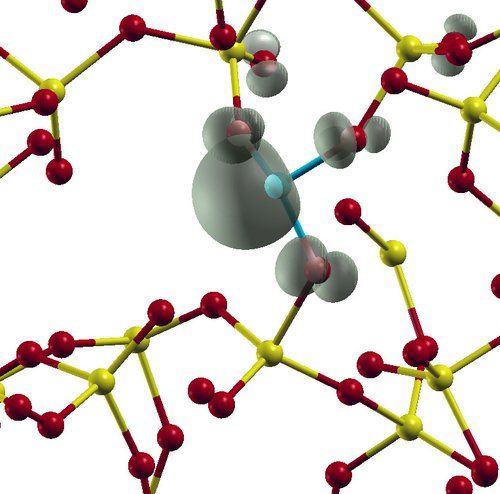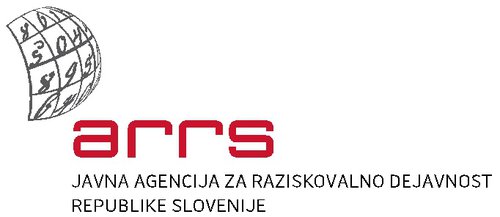Radiation induced paramagnetic dEfects in vitreous P2O5 and sodium- PHosphate gLassES (REPHLES)
Content description of the project with basic funding information
Phosphate glasses, due to its low Tg (~300 to 500 °C) and melting temperature (~800 to 1300 °C) facilitating the final formation process, are used in various industrial applications [1]. In biomedical field, phosphate glass is part of perspective bone implants of complex phosphosilicate glass, and moreover in the last few years bioresorbable phosphate glass optical fibers have been developed for biomedical applications. In nuclear waste storage, in particular by means of vitrification processes, iron-phosphate glasses are regarded as a stable storage medium for high-level nuclear waste. For optical applications, phosphate glasses are widely used, in particular, doped with Rare-Earth Elements (REE). For instance, phosphate glasses doped with Yb give highly efficient emission at ~1000 nm.
As the dissolution of rare-earth ions is much easier in a phosphate matrix than in silicate glasses, phosphate glasses can be used as laser glass for the production of high-power solid-state
lasers systems [2].
Ionizing irradiation induces many point defects in phosphate and phospho-silicate glasses [3]. Several paramagnetic point defects have been detected, in particular the P1, P2, P4, and the so-called r-POHC, and l-POHC centers. The radiation induced generation of the latter paramagnetic centers has an almost linear dependence on the dose so that phosphate glasses are nowadays considered also for dosimetry applications [4].

Despite the P1 center is commonly accepted to be analogous to the Si-E’ center, its experimental characterization is rather poor and mainly based on a 50 years old data analysis [3, 5]. Moreover, past EPR studies combined with annealing treatments could distinguish the signal of P-related peroxy radicals, the presence of which was recently further confirmed [6]. Concerning the modelling of the structure of phosphate glasses, despite advanced techniques have been applied e.g. reverse Monte Carlo [7], the validation through comparison with spectroscopies has remained rather limited.
The present REPHLES project aims, by a combined use of experimental and theoretical techniques, to improve our understanding and modelling of point defects in P2O5 and in alkali-phosphate glasses.
Funding: Project supported through the ARRS-CEA Bilateral Project “REPHLES” NC-0008 (2019).
[1] https://patents.google.com/patent/US20180138446A1/en
[2] J. H. Campbell et al, J. Appl. Glass Sci. 2(1), 3 (2011).
[3] D. L. Griscom et al, J. Appl. Phys. 54, 3743 (1983).
[4] S. Fan et al, Radiation Measurements 46, 46 (2011).
[5] R. A. Weeks and P. J. Bray, J. Chem. Phys. 48, 5 (1968).
[6] V. Pukhkaya, F. Trompier, and N. Ollier, J. Appl. Phys. 116, 123517 (2014).
[7] Y. Onodera et al, Nature Comm. 8, 15449 (2017).
Composition of the project team
UNG:
- Matjaz Valant (Project leader; vodja) Bibliography
- Luigi Giacomazzi Bibliography
CEA:
- Nadege Ollier: Atomic Energy and Alternative Energies Commission (CEA), Laboratoire des solides Irradies, IRAMIS/CEA Contact
Project phases and their implementation
Workpackage 1 (coordinator: CEA-LSI)
- Synthesize P2O5 and sodium-phosphate glasses
- EPR measurements of irradiated samples dedicated to the detailed investigation of the radiation induced paramagnetic centers
- Current Status: planning the implementation in progress
Workpackage 2 (coordinator: UNG)
- Modelization by first-principles techniques of the P1 center and other paramagnetic centers in P2O5 glass
- Modelization by first-principles techniques of paramagnetic centers in sodium-phosphate glasses
- Current Status: in progress
Bibliographic references
Publication:
L. Giacomazzi, L. Martin-Samos, N. Richard, M. Valant, N. Ollier,
“First-principles investigation of paramagnetic centers in P2O5 based glasses”
Published in 2019 International Conference on Simulation of Semiconductor Processes and Devices (SISPAD)
COBISS.SI-ID \u2013 5476603
https://ieeexplore.ieee.org/document/8870486
DOI: 10.1109/SISPAD.2019.8870486
L. Giacomazzi, N. S. Shcheblanov, L. Martin-Samos, M. E. Povarnitsyn, S. Kohara,
M. Valant, N. Richard, and N. Ollier,
Paramagnetic Intrinsic Point Defects in Alkali Phosphate Glasses: Unravelling the P3 Center Origin and Local Environment Effects
J. Physical Chemistry C 125 , 8741 (2021). COBISS.SI-ID – 61769731
DOI: 10.1021/acs.jpcc.0c11281


